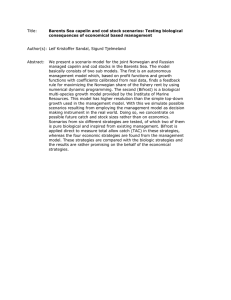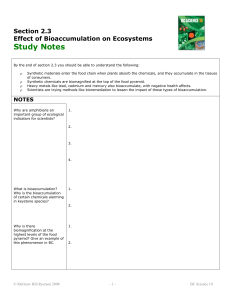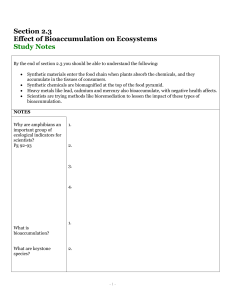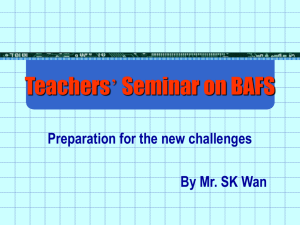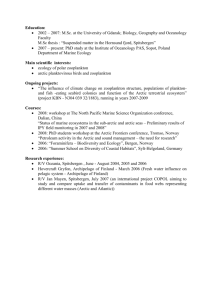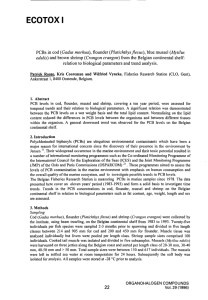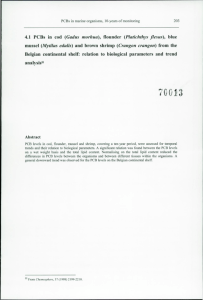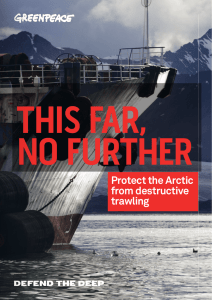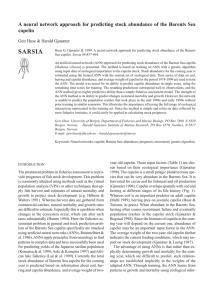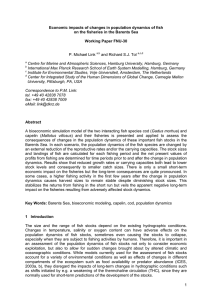SEASONAL PCB BIOACCUMULATION IN AN ARCTIC MARINE ECOSYSTEM: A MODEL ANALYSIS
advertisement
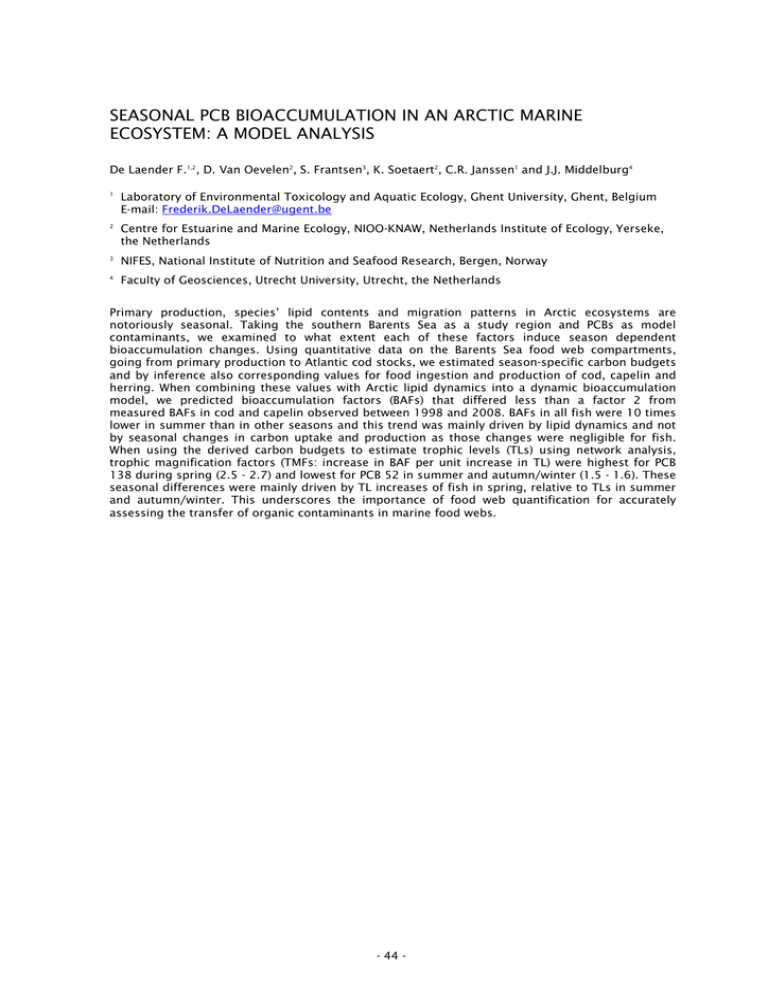
SEASONAL PCB BIOACCUMULATION IN AN ARCTIC MARINE ECOSYSTEM: A MODEL ANALYSIS De Laender F.1,2, D. Van Oevelen2, S. Frantsen3, K. Soetaert2, C.R. Janssen1 and J.J. Middelburg4 1 Laboratory of Environmental Toxicology and Aquatic Ecology, Ghent University, Ghent, Belgium E-mail: Frederik.DeLaender@ugent.be 2 Centre for Estuarine and Marine Ecology, NIOO-KNAW, Netherlands Institute of Ecology, Yerseke, the Netherlands 3 NIFES, National Institute of Nutrition and Seafood Research, Bergen, Norway 4 Faculty of Geosciences, Utrecht University, Utrecht, the Netherlands Primary production, species’ lipid contents and migration patterns in Arctic ecosystems are notoriously seasonal. Taking the southern Barents Sea as a study region and PCBs as model contaminants, we examined to what extent each of these factors induce season dependent bioaccumulation changes. Using quantitative data on the Barents Sea food web compartments, going from primary production to Atlantic cod stocks, we estimated season-specific carbon budgets and by inference also corresponding values for food ingestion and production of cod, capelin and herring. When combining these values with Arctic lipid dynamics into a dynamic bioaccumulation model, we predicted bioaccumulation factors (BAFs) that differed less than a factor 2 from measured BAFs in cod and capelin observed between 1998 and 2008. BAFs in all fish were 10 times lower in summer than in other seasons and this trend was mainly driven by lipid dynamics and not by seasonal changes in carbon uptake and production as those changes were negligible for fish. When using the derived carbon budgets to estimate trophic levels (TLs) using network analysis, trophic magnification factors (TMFs: increase in BAF per unit increase in TL) were highest for PCB 138 during spring (2.5 - 2.7) and lowest for PCB 52 in summer and autumn/winter (1.5 - 1.6). These seasonal differences were mainly driven by TL increases of fish in spring, relative to TLs in summer and autumn/winter. This underscores the importance of food web quantification for accurately assessing the transfer of organic contaminants in marine food webs. - 44 -
